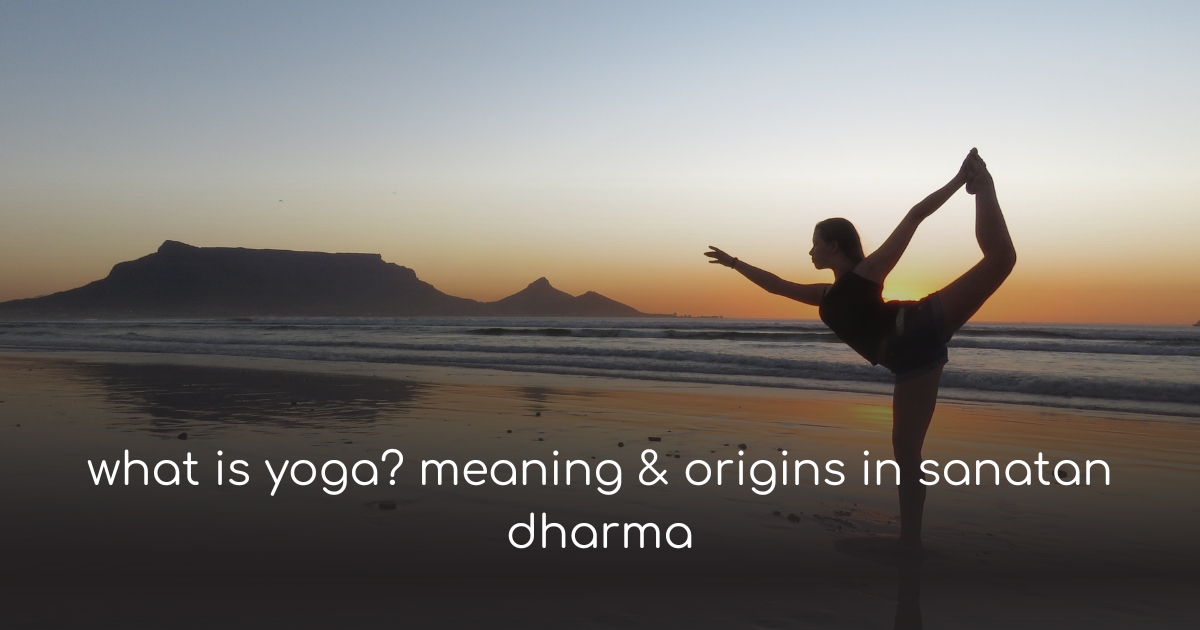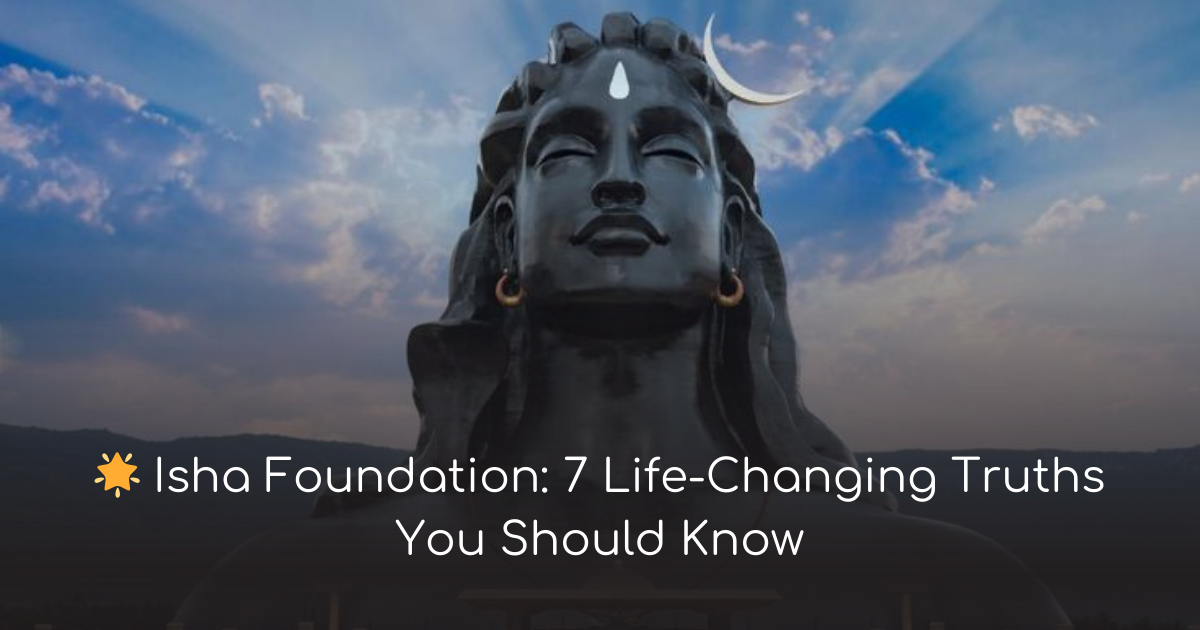what is moksha 7 powerful truths that set you free

What is moksha? Discover 7 powerful truths about liberation, karma, and the eternal soul in Sanatan Dharma that will guide you toward spiritual freedom.
🌟 What Is Moksha? 7 Powerful Truths That Set You Free
What is moksha? Is it heaven? Is it peace after death? Or something deeper?
In Sanatan Dharma, moksha is not a religious reward. It is the final liberation — the moment when the soul realizes its true nature, becomes free from karma, and is no longer bound to the cycle of birth and death (samsara).
The Vedas, Upanishads, and Bhagavad Gita speak of moksha not as an abstract idea, but as the ultimate goal of life (purushartha) — higher even than artha (wealth), kama (pleasure), and dharma (righteous living).
Let’s uncover 7 powerful truths that explain what moksha truly is, and how it sets you free forever.
🌌 Truth 1 – Moksha Means Freedom From the Cycle of Birth and Death
The human soul (Atman) is eternal. Yet, due to ignorance and karma, it keeps taking birth again and again — caught in the endless wheel of samsara.
Each life brings:
-
New desires
-
New attachments
-
New karma
-
And eventually, new suffering
🔁 What Is Samsara?
Samsara is the repetitive cycle of life, death, and rebirth. The soul enters a new body based on past karmas — and continues its journey in search of peace, identity, and fulfillment.
But this cycle is exhausting. Desires are never-ending. Pain returns in new forms. Even pleasures are temporary.
“Again and again I was born, again and again I died. But now, I seek what is eternal.”
✨ Moksha: The End of Rebirth
Moksha is when this cycle ends.
It is when the soul:
-
Has resolved all karmas
-
Has no more desires binding it to Earth
-
Realizes its oneness with the Supreme (Brahman)
💡 Truth: Moksha is not about escaping life. It’s about ending unconscious repetition — and entering eternal stillness and bliss.
🧘 Truth 2 – Moksha Is the Realization of the Atman
You are not the body.
You are not the mind.
You are the Atman — eternal, unchanging, formless, pure consciousness.
But due to Maya (illusion) and Avidya (ignorance), we forget this truth. We think:
-
“I am this name, this body”
-
“I am happy, sad, rich, poor”
-
“I am doing this, achieving that”
This ignorance keeps the soul trapped in identity and action, generating karma and rebirth.
📖 Upanishads on Moksha
The Chandogya Upanishad declares:
“Tat Tvam Asi” – You Are That (Supreme Consciousness).
The Katha Upanishad says:
“Smaller than the smallest, greater than the greatest is the Self dwelling in the heart.”
🕉️ Gita on Moksha
Krishna tells Arjuna in the Bhagavad Gita:
“The wise see the Self in all beings and all beings in the Self.”
When the soul remembers what it truly is, all fear and bondage vanish.
💡 Truth: Moksha is not something you gain. It is something you realize — because you already are That.
🔄 Truth 3 – Karma Must Be Burnt to Attain Moksha
Karma is the invisible law of cause and effect. Every thought, word, and action creates karma — which becomes the seed of future experiences.
There are three types of karma:
-
Sanchita – accumulated karma from many lifetimes
-
Prarabdha – karma that is bearing fruit in this life
-
Agami – karma you are creating now
Moksha is possible only when:
-
Sanchita is burnt through self-realization
-
Prarabdha is exhausted through living it out
-
Agami is neutralized by non-doership and detachment
🔥 How to Burn Karma?
-
Jnana (self-knowledge) destroys ignorance
-
Bhakti (devotion) burns ego and attachments
-
Karma Yoga purifies the heart through selfless action
-
Meditation (dhyana) dissolves mental impressions
“As fire burns dry wood to ashes, so does knowledge burn karma to nothing.” – Bhagavad Gita 4.37
💡 Truth: Moksha is freedom from the cycle of karma, which binds the soul like invisible chains.
🛤️ Truth 4 – The Paths to Moksha: Jnana, Bhakti, Karma, Dhyana
Sanatan Dharma, in its vast wisdom, doesn’t offer one fixed path to moksha. It understands that each soul is unique, and thus, gives four primary yogic paths:
1. 🧠 Jnana Yoga – The Path of Knowledge
-
Involves study, inquiry, and contemplation
-
Suitable for thinkers and introverts
-
Focus: “I am not this body or mind. I am Brahman.”
2. ❤️ Bhakti Yoga – The Path of Devotion
-
Involves love for God, prayer, singing, surrender
-
Suitable for emotional and heart-centered people
-
Focus: “Thy will be done, not mine.”
3. 🤝 Karma Yoga – The Path of Selfless Action
-
Doing one’s duty without attachment to results
-
Suitable for active, social individuals
-
Focus: “I act as an offering. I do not seek fruits.”
4. 🧘 Raja Yoga/Dhyana Yoga – The Path of Meditation
-
Systematic control of mind, breath, and senses
-
Suitable for disciplined, contemplative seekers
-
Focus: “Still the mind, and the Self will shine.”
“All paths lead to the same goal — the realization of the Self.” – Swami Vivekananda
💡 Truth: Choose the path that resonates with your heart. All lead to the same truth — your eternal Self.
👉 In the next section, we’ll explore:
-
✨ Moksha as a present-moment possibility (Jivanmukti)
-
🧘 The role of detachment and discrimination (Vairagya & Viveka)
-
🌺 The final merging with Brahman, and the bliss that remains
-
🙏 A powerful conclusion and step-by-step action plan for seekers
✨ Truth 5 – Moksha Is Here and Now, Not Just After Death
Many people believe moksha happens only after death, but Sanatan Dharma clearly teaches that liberation is possible even while living — this is known as Jivanmukti.
A Jivanmukta is someone who:
-
Lives in a human body
-
Functions in the world
-
Yet is completely free from ego, karma, fear, and bondage
They remain untouched by pleasure or pain.
They act without attachment.
They see divinity in all beings.
“One who is unattached to the fruits of actions, whose mind is pure, who has mastered the self — that one attains peace in this life.” – Bhagavad Gita 5.7
🌟 Signs of a Jivanmukta:
-
Deep inner stillness
-
Compassion for all beings
-
Complete detachment from outcomes
-
No fear of death
💡 Truth: You don’t need to wait to die for moksha. You can be free right now — by dropping ego and resting in pure awareness.
🕯️ Truth 6 – Detachment and Awareness Lead to Liberation
Two wings carry the seeker toward moksha:
-
Vairagya (detachment)
-
Viveka (discrimination)
🌿 What Is Detachment?
Detachment doesn’t mean abandoning the world.
It means not clinging to anything — knowing all things are temporary.
You still:
-
Love your family
-
Enjoy your duties
-
Appreciate beauty
…but you don’t seek lasting identity in them. You remain free inside.
🔍 What Is Discrimination?
Viveka means:
-
Knowing what is real vs unreal
-
Eternal vs temporary
-
Self vs not-self
A wise seeker focuses on what doesn’t change — the Atman, not the body, wealth, or emotions.
“The one who sees the unchanging amidst the changing is the knower of truth.”
💡 Truth: Moksha requires inner clarity and courage — to let go of the false and embrace the real.
🌺 Truth 7 – Moksha Is Not Escape, But Union
Moksha is not an escape from the world.
It is a reunion — of the soul (Jivatma) with the Supreme (Paramatma).
This is called Brahma Nirvana — the merging of the individual consciousness into the infinite.
🌀 What Remains After Moksha?
-
No rebirth
-
No desire
-
No fear
-
No separation
Only:
-
Bliss (Ananda)
-
Consciousness (Chaitanya)
-
Eternal peace (Shanti)
“Like rivers merging into the ocean, the soul merges into Brahman and becomes one with all that is.” – Mundaka Upanishad
💡 Truth: Moksha is not void. It is fullness without form, love without attachment, and being without identity.
🙏 Conclusion – Moksha Is the Destiny of Every Soul
So… what is moksha?
-
It is the soul’s true home
-
It is the end of illusion and beginning of truth
-
It is not in the sky — it is in your inner awakening
Every soul is destined to return to its source. Moksha is not a reward. It is your birthright. It is your natural state, forgotten under layers of ego and karma.
“You are not bound. You are already free. You just have to realize it.”
Don’t wait. Don’t postpone. The path is now.
📿 Want to walk the path to moksha?
Start with:
-
Daily meditation
-
Reading the Upanishads or Bhagavad Gita
-
Practicing self-inquiry and surrender
📖 Explore more divine insights on karma, atman, yoga, and spiritual liberation at SanatanYug.com
Let this life be your turning point.
🕉️ Freedom is not far — it is within you.
❓ FAQs – About Moksha in Hinduism
1. Is moksha the same as nirvana?
In essence, yes. Both mean liberation from the cycle of rebirth. Moksha is from Hindu tradition; Nirvana is more commonly used in Buddhism and Jainism.
2. Can anyone attain moksha?
Yes. According to Sanatan Dharma, every soul is eligible. Through right action, devotion, wisdom, or meditation — moksha can be attained.
3. Does moksha happen after death?
It can, but Jivanmukti (liberation while living) is also possible — when the seeker realizes their true nature while still alive.
4. Is moksha like going to heaven?
No. Heaven (Swarga) is still within the cycle of birth and death. Moksha is beyond all realms — it is merging with Brahman, the Absolute.
5. How do I know I’m progressing toward moksha?
Signs include:
-
Inner peace
-
Detachment
-
Decrease in desire and fear
-
Increased compassion and clarity
-
Deep spiritual longing








